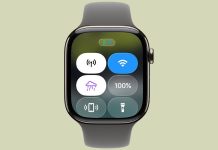Apple’s upcoming iPhone 20, rumored to mark the 20th anniversary of the iPhone in 2027, could deliver a major leap in image quality thanks to a key upgrade in its camera sensor technology.
According to industry sources cited by Naver leaker Yeux1122, Apple plans to integrate LOFIC (Lateral Overflow Integration Capacitor) technology into its camera sensors beginning with the iPhone 20. The update is expected to significantly improve dynamic range and overall photo realism.
Yeux1122 notes that Apple won’t be the only company adopting LOFIC. Chinese smartphone makers like Huawei and Xiaomi are reportedly preparing to feature the same technology in their next-generation flagships. However, Samsung appears to be lagging behind, lacking a clear roadmap for LOFIC implementation. This could pose a setback for the company, which has been developing new sensors to compete with long-time Apple supplier Sony.
Apple is said to have been exploring its own in-house camera sensor technology for some time, reportedly producing a prototype as early as August 2025.
What is LOFIC technology?
LOFIC is an advanced variation of CMOS sensor architecture that optimizes how individual pixels capture light. Instead of losing excess charge when a pixel becomes overexposed, LOFIC sensors store overflow electrons in a small capacitor within the same pixel. This allows a single exposure to capture a wider range of light — from deep shadows to bright highlights — without losing detail.
Traditional HDR photography requires combining multiple exposures to achieve similar results, often introducing motion artifacts in the process. LOFIC, by contrast, achieves a high dynamic range in a single shot, providing sharper, more natural-looking images and videos.
The improvements aren’t limited to still photography. A LOFIC-enabled camera sensor could push dynamic range to around 20 stops — on par with professional cinema cameras — compared to roughly 13 stops on current iPhones.
If these reports hold true, Apple’s 2027 iPhone may set a new benchmark not just for smartphone cameras but for mobile imaging as a whole.




